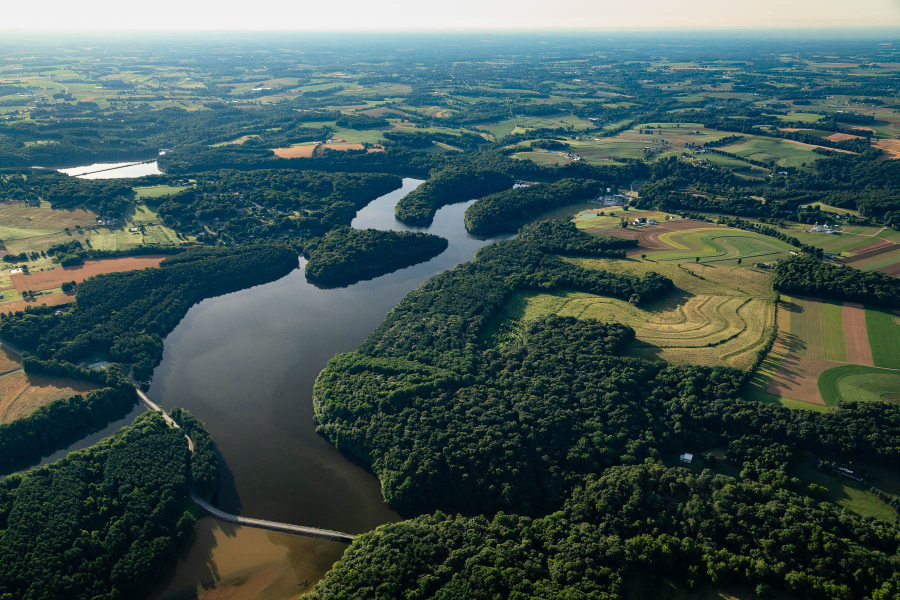Bay Program survey reveals knowledge and capacity gaps among small communities and newly elected officials
Partnership adds two new indicators to its Local Leadership Outcome

Like most local elected officials in the Chesapeake Bay watershed, Councilmember Kathryn Cloyd is a volunteer who juggles many responsibilities. In a given day, Cloyd can be responsible for council meetings, budgets and contracts, committee reports and more, all while maintaining her full-time job.
Cloyd represents Oxford, Pennsylvania, a small town with a little over 5,700 residents. As a councilmember she is obligated to address a range of constituent concerns—from economic development and public health to infrastructure maintenance and education—all with a limited budget and a four person staff.
Despite that, Councilmember Cloyd remains committed to the environmental challenges of her borough. Located in southeastern Pennsylvania—just 22 miles from the mouth of the Bay—Oxford is required to meet stormwater runoff regulations that improve the health of local and downstream waters.
“I have a responsibility to help the borough meet our [stormwater] requirements by implementation of best management practices,” said Cloyd, adding that these practices should “benefit businesses and enhance the lives of residents.”
At the Chesapeake Bay Program, our partners are keenly aware of the impact made by local elected officials such as Councilmember Cloyd. Meeting the clean water goals of the Chesapeake Bay Watershed Agreement requires buy-in and support from these local leaders, who represent the communities where so much on-the-ground implementation occurs.
In an effort to better support local elected officials, the Chesapeake Bay Program has released new data that show the knowledge and capacity gaps these decision-makers face when addressing clean water issues. The research has led to two brand new indicators that the partnership can use to track its progress.
Understanding the needs of local officials
In 2022, the Local Leadership Workgroup surveyed local officials to gain a better understanding of their knowledge and actions related to clean water. The survey results led to the creation of two indicators, which will be used to track progress towards the Local Leadership Outcome.
The first indicator is focused on local officials' knowledge of federal water resource regulations. In the survey, respondents noted whether they were “certain” or “uncertain” about various federal regulations. Elected officials from communities with 10,000 - 99,999 residents reported being “certain” 65.1% of the time, while those from communities with 100,000+ residents reported 67.7% certainty. In contrast, among smaller communities (9,999 residents or fewer) local officials reported certainty only 48.3% of the time.
A similar trend was observed among newly elected officials (less than two years in office), who reported being certain about federal regulations just 44.1% of the time. Their more tenured counterparts reported much higher levels of certainty; up to 72.6% for officials who have been in office for 11 or more years.
The second indicator captures actions taken by local officials to protect their waterways. Many local governments are already actively doing this work, with 50% adopting local rules, ordinances or regulations, 47% implementing or enforcing local rules, ordinances or regulations, 54% installing on-the-ground projects to directly improve water quality or water resources and 64% applying for grants.
Using the indicators to guide the work
These new indicators provided data to back up what many Local Leadership Workgroup members were already reporting anecdotally: The first is that the knowledge and capacity gaps are greatest for elected officials from small communities and for newly elected officials; and second is, that while there is plenty of room for growth, many local governments are already actively working to protect and restore their local waterways.
Going forward, the workgroup and the full Chesapeake Bay Program partnership will utilize these results to increase the knowledge and capacity of local officials, particularly newly elected officials and those from smaller communities.
Small investments lead to big results
A lot can happen when local officials invest in capacity building, just ask Councilmember Cloyd.
In 2021, the councilmember participated in Seeking Stormwater Solutions, a program led by the University of Maryland’s Environmental Finance Center in which 23 local officials from throughout the watershed participated in educational courses and peer-to-peer discussions around stormwater runoff.
“I’m a great believer in not reinventing the wheel…and I was encouraged by listening to the successes of other communities,” Cloyd said.
Since completing the Seeking Stormwater Solutions program, Cloyd has led the borough through a revision of their Pollutant Reduction Plan and secured several conservation grants that will lay the groundwork for future stormwater initiatives, including the installation of more rain gardens, offering residential rain barrels and other green infrastructure.
As a result, the Oxford Borough received the Keep Pennsylvania Beautiful Community Pride Award for its outstanding environmental stewardship.
“Since joining the Council, I have been surprised and pleased at how much we’ve been able to accomplish,” said Cloyd. “I have two sons and I want them to know that I did what I can to protect the environment.”

Comments
There are no comments.
Thank you!
Your comment has been received. Before it can be published, the comment will be reviewed by our team to ensure it adheres with our rules of engagement.
Back to recent stories